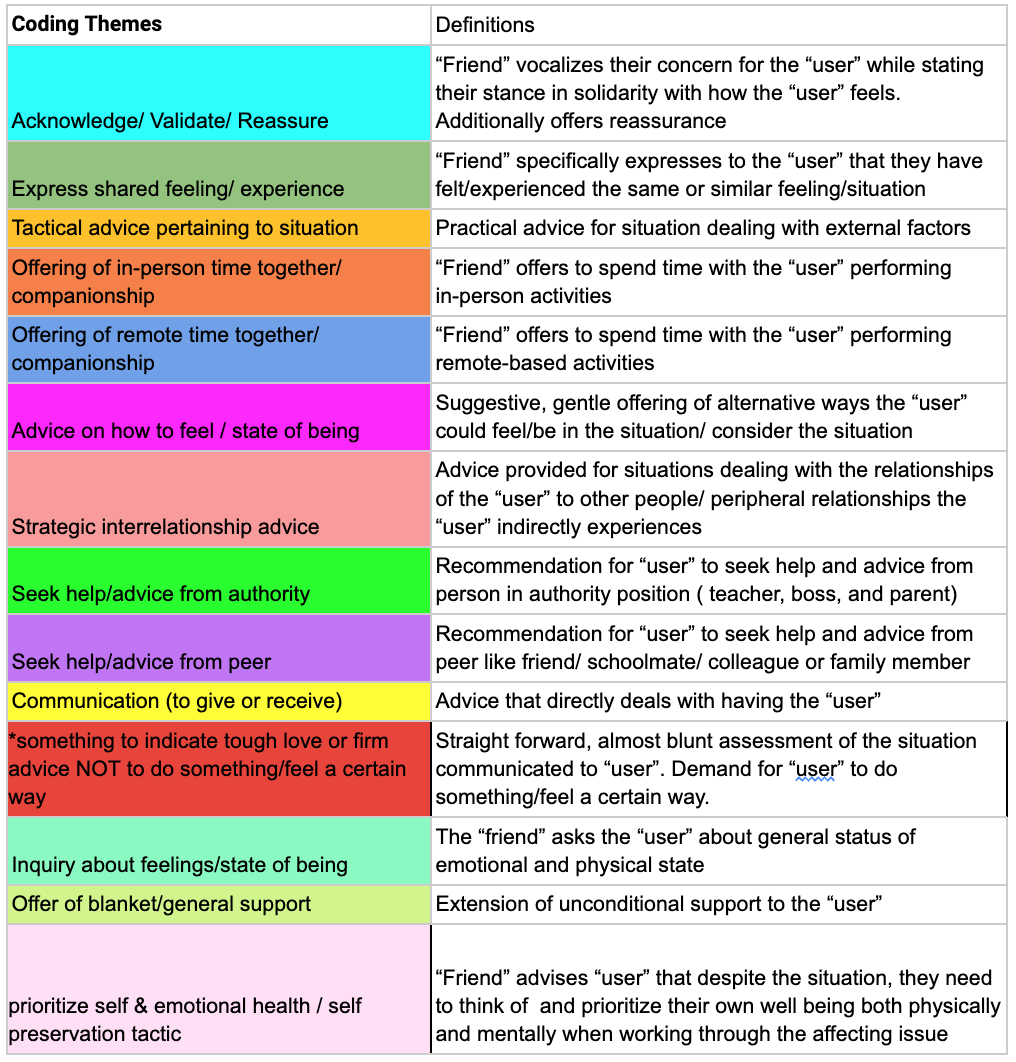“Capturing Teens’ Voice in Designing Supportive Agents”
Research Project
As a collective class of 5 people, we designed and conducted a full research project around the design of a conversational user interface that would target the emotional support of teenagers. We devised research questions surrounding the following areas: understanding the emotional issues shared between teens for which they seek support, the types of conversational support they provide each other, the types of support they prefer, stratified by a comparison of older and younger teenage groups.
We recruited and conducted virtual focus groups with the teenage participants to design a conversation that addressed a critical incident that caused mental/emotional issues for which the responding teenagers in the study provided solutions that they themselves would like to receive. Through focus groups facilitated over Zoom, a synchronous role-playing game was played with the teenage participant to design conversations that addressed a critical incident experienced by one of the participants. Digital collaborative instruments were created through Google slides to capture conversation turns. Discussions were conducted to gather their feedback on the design of future conversational agents from a teenager’s perspective. Observations of physical affect, chat transcripts, notes of the Zoom session, and the digital artifacts produced from the activity were collected and prepared for analysis. The data was qualitatively coded and aggregated by frequency of occurrence and other dimensions.
My contributions specifically included moderation of focus group sessions, chat monitoring, and observation during the course of the focus group sessions. I researched and gathered quality sources to support the literature review. In partnership with one of my classmates, we devised an automated way to organize the data into discrete units that could easily be aggregated to various dimensions during data analysis. I developed qualitative data coding to group the teens conversation turns into themes and sub-themes to arrive at statistically supported findings.
This research project investigated a specific population’s mental and emotional need during a critical incident and how technologies like conversational agents could be designed to support them. Conducting focus groups enabled us to collect data through different dimensions: visually, textually, and aurally, resulting in a rich resource to analyze. Approaching supportive technology design through participatory design, as the resulting data in the findings revealed, foregrounded teenagers’ technological and emotional needs, thus providing a conduit for their voices to be heard in the process.


